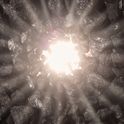When I met Edward Witten—one of two physicists on Prospect's world thinkers list—at CERN in Geneva some years ago he chatted genially enough in his rapid, precise and high-pitched sentences, and yet it was hard to shake off a sense that this was some omniscient demigod doing a reasonable impression of pretending to be an ordinary mortal. His high forehead even seems designed to hold more brain than the rest of us. It's hard to get past his reputation as the brainiest mathematical physicist on the planet.
The awe with which Witten is regarded among his peers makes Stephen Hawking seem like a bright graduate student. He is the only physicist to have been awarded a Fields Medal, a Nobel equivalent for mathematicians under 40. That was back in 1990, before he had even come up with the theory for which he is most famous: M-theory, which showed that all five of the then-existing versions of string theory were different aspects of the same meta-theory. (Witten never specified what “M” stands for: some say magic, mystery or matrix.) The discovery of this unanticipated unity offered one of the most telling hints that string theorists were on to something.
Yet string theory, first popularised in the 1980s, is one of the most divisive ideas in physics. It represents an attempt to get down to the next layer of reality, after quantum mechanics has explained the behaviour of atoms and their constituent particles, and the theory called quantum chromodynamics explained how subatomic particles within those atoms (protons and neutrons) are themselves made of more fundamental particles called quarks and gluons. String theory posits that the point-like particles of quantum theory are made up of one-dimensional vibrating threads called “strings."
But string theory is more than that, for its real aim is to reconcile quantum theory with gravity, the force currently described by Einstein’s theory of general relativity (see my blog). The discrepancy between these two descriptions of the physical world—one working primarily at gigantic scales, the other at the scale of the invisibly small—is the most alarming lacuna in modern physics. Resolving it—developing a working theory of quantum gravity—would give us a unified view of physics and would surely be one of the greatest scientific achievements since both theories were conceived a century ago.
So why are some physicists so skeptical about string theory? The problem is that the ideas it proposes are impossible to test, not just now but in the foreseeable future. Physicist Brian Greene, who has worked on string theory, recently admitted that “I now hold only modest hope that the theory will confront data during my lifetime." The reason is that strings are so small, and the smaller the scales you want to probe, the larger the energies you need. The energy scales of string theory are far, far beyond even what can be attained in the particle collisions of the Large Hadron Collider at CERN.
This means that string theory is at present more a theory of mathematics than of physics. Its central notion, shared by other well-attested aspects of fundamental physics, is to describe the fundamental forces of nature in terms of their symmetry properties: how the forces look if, say, directions in time or space are reversed. In fact, string theory supports a now widespread conviction among particle physics that fundamental particles are governed by a principle called supersymmetry, which gives each of them a hitherto unobserved partner. (This is something that the Large Hadron Collider might be able to test when it starts operating again around the spring of this year—but unfortunately that won’t help us to confirm or exclude string theory, because supersymmetry is merely consistent with it, and doesn’t depend on it.)
One of the key predictions specific to string theory is that the three dimensions of space (up-down, left-right and front-back, say) and the one dimension of space (past-future) are not all there is to the fabric of reality. String theory insisted that there are in fact not four but ten dimensions of spacetime—and Witten’s M-theory added one more. We don’t see these dimensions because they are “compactified:” in effect rolled up and hidden away, much as the three-dimensional form of a hosepipe looks like a one-dimensional strand from far enough away.
Proposing something as dramatic as seven extra dimensions, without offering the slightest prospect of testing to see if they are there, is a step too far for some physicists. String theory develops its arguments carefully and systematically, extrapolating from the physics we already know using sound mathematical reasoning. But it cannot avoid making many assumptions on the way, which we have no means of validating, and so it can seem to be nothing but a tissue of speculation. That’s why nailing your flag to the mast of string theory has come to be seen as an expression of faith rather than reason, and physics has become polarised into believers and sceptics. Those tensions have been ramped up by the fact that, during the past several decades, string theory looked a little like a monopoly that you had to buy into if you wanted to make an impression in fundamental physics. (It’s important to remember, though, that this was only one highly specialized enclave of the entire discipline.)
But is string theory the only game in town for a theory of quantum gravity? That’s where Lee Smolin, the other fundamental physicist on Prospect’s World Thinkers list, comes in. Smolin gained a degree of notoriety with his 2006 book The Trouble With Physics, of which the subtitle said it all: “The rise of string theory, the fall of a science, and what comes next.” Smolin criticised string theory for failing to make any testable predictions and for its near-hegemony on approaches to quantum gravity. As Smolin pointed out, Witten might have unified the variants of the theory but his work had done nothing to stave off perhaps the gravest problem: that the possible versions of our universe predicted by the theory are absurdly abundant. There are around 10 raised to the power 520 of them, many more than the number of fundamental particles in the known universe. With that many options to choose from, said Smolin, the science becomes meaningless.
Smolin didn’t just highlight the problem. He has offered an alternative answer: a theory of quantum gravity called loop quantum gravity. Building on the work of other specialists in general relativity, this idea develops Einstein’s theory using a language more akin to that of standard particle physics. It suggests that spacetime is not a smooth fabric but is itself “quantized,” built up from discrete units in a kind of tessellation at unimaginably small scales.
Loop quantum gravity is not alone in offering a rival to string theory, but it is one of the leading candidates, albeit still with only a small gaggle of supporters and still also struggling to come up with any experimental test. One hope for getting observational clues about where a theory of quantum gravity is to be found involves looking at extremely energetic astrophysical processes such as the cataclysmic explosions called gamma-ray bursts, in which the energies exceed anything achievable in a particle accelerator. But it’s still not clear how feasible this will be.
The differences between these rival theories go deeper than just a different set of equations: they are about how science should be done. Smolin says string theorists like Witten have told him that “one must follow the theory where it goes… to try to tell the theory where to go would be to presume that you are ‘smarter than the theory.’” Smolin disagrees, arguing that theories must be chosen and shaped in a way that enables us to see what to do with them—not least, how to test them.
The two are very contrasting personalities. In comparison to Witten’s calm, other-worldly precision, Smolin throws out ideas in ramshackle profusion, some of which would sound wild if they were not so creative, as if he is shambolically ferreting around in the gigantic attic of his mind. (In fairness, when I met him a short time ago at the BBC he was seriously jetlagged.) In this much he resembles two other inventive thinkers in fundamental physics who might equally have warranted a place on the Prospect list: Roger Penrose (who has his own views on quantum gravity) and David Deutsch, who is often credited with first dreaming up the idea of using quantum physics to create a new kind of computer.
I’m told that some physicists are inclined to roll their eyes at Smolin’s name, perhaps exasperated by his readiness to make such dramatic conjectures while the details are still sketchy. But a healthy physics needs both its hyper-rigorous Wittens and its imaginative Smolins. It would take bravery or recklessness to bet on which of them, if either, is right.













